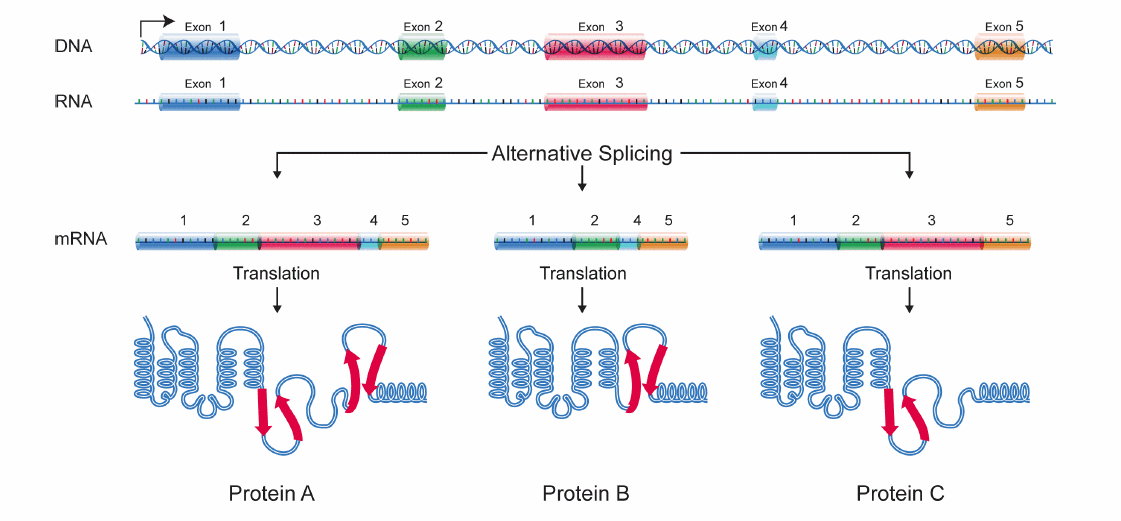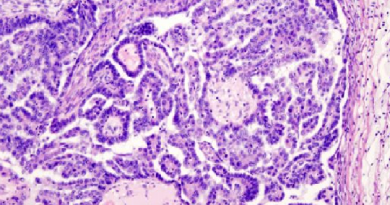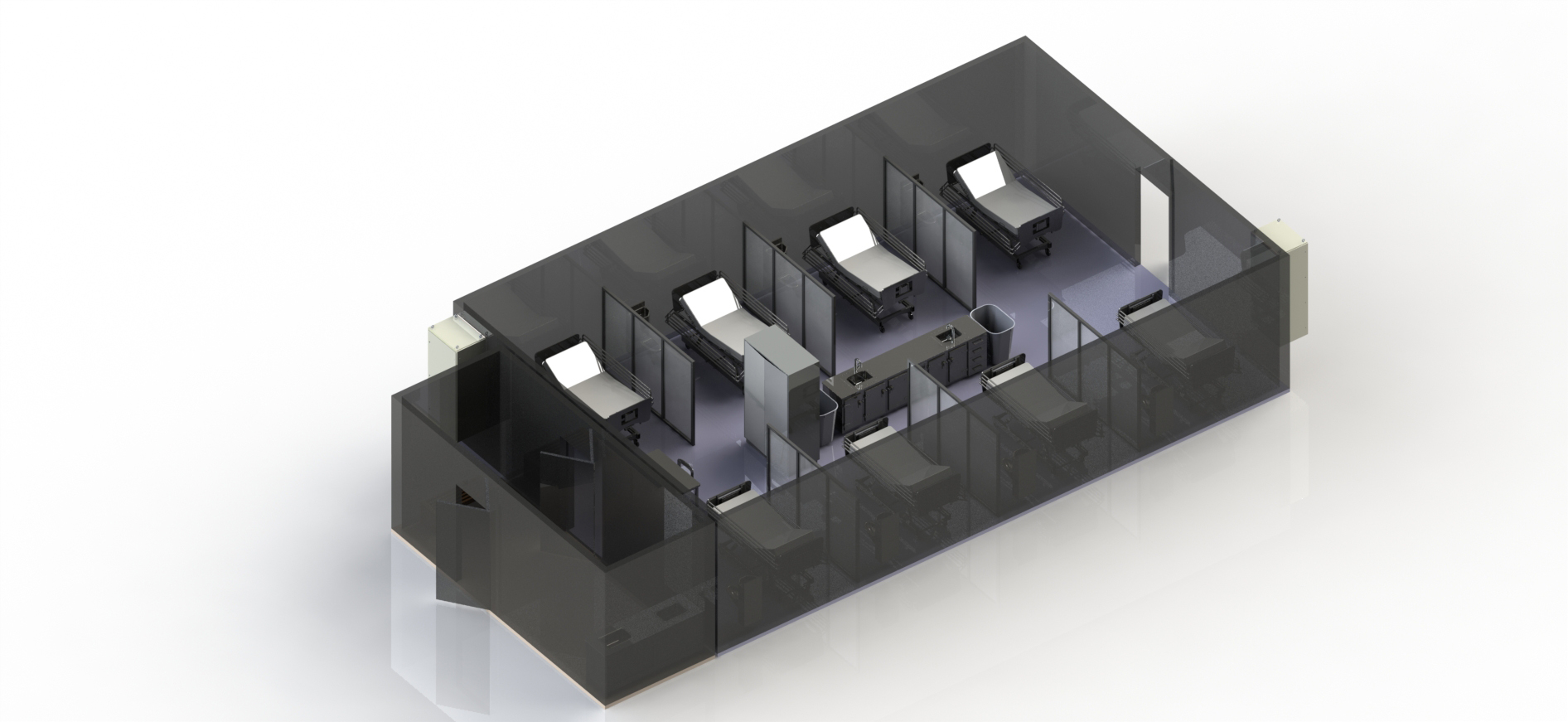How do muscles grow up? Check alternative splicing
Growing up is a complex affair, even for muscles. In the mouse, for instance, newborn muscles grow into adult muscles within the first three weeks after birth. This transition allows a newborn mouse with limited ability to move to become an agile, fast-moving creature.
During this transition, some of the newborn muscle proteins are replaced by adult proteins which allow the muscles to work fully. This process of maturation is not just for muscles. After birth, most tissues are remodeled to achieve adult form and function.

“One of the interests of my lab is to better understand the dramatic transition that occurs in skeletal muscles from birth to adulthood,” said Dr. Thomas A. Cooper, professor of pathology and immunology and of molecular and cellular biology at Baylor College of Medicine.
Cooper and colleagues at Baylor and the University of North Carolina at Chapel Hill study the genetic processes that mediate muscle maturation, such as alternative splicing. By disturbing alternative splicing, they have discovered essential roles four proteins play in normal adult muscle function. This is important because it opens the door to further explore the involvement of these and other proteins in muscle disorders such as myotonic dystrophy, the second most common cause of muscular dystrophy, and numerous other muscle disorders that affect tens of thousands of individuals in the U.S..
Making the most of a single gene
“Alternative splicing allows cells to make a large number of proteins from a limited number of genes,” said Cooper who also is professor of molecular physiology and biophysics at Baylor.
It would be like putting together a number of different outfits by combining in different ways a limited number of pieces of clothing.
“To make proteins, genes in the DNA are transcribed into RNA, which is then translated into protein. Before the RNA is translated into protein, it is processed and the fragments spliced in a certain way,” Cooper said. “In almost all genes, the RNA is spliced in more than one way. That is alternative splicing; it allows one gene to make many different proteins.”

“We are interested in better understanding alternative splicing as a regulatory mechanism of gene expression because it is very prevalent, especially in humans,” said co-senior author Dr. Jimena Giudice, who was a postdoctoral fellow in the Cooper lab and currently is an assistant professor of cell biology and physiology at the University of North Carolina at Chapel Hill. “We know many aspects of how this regulation occurs. In this study we discovered that alternative splicing affects proteins that control the transport of molecules inside the cell, a process that always captured my interest.”

“In a previous work published in Nature Communications, we found that nearly 700 genes in the mouse heart go through alternative splicing during postnatal development,” said Cooper. “We also found that these genes in the heart are also undergoing the same alternative splicing process in skeletal muscle. Importantly, the changes happen in mice and in people, which opens the possibility of modeling human muscle disorders in the mouse.”
The researchers think that these genes are potentially linked to myotonic dystrophy, a disease also studied in the Copper lab. The condition affects skeletal muscles, heart and the brain. Finding out what these genes do in healthy mouse muscle will help better understand myotonic dystrophy and related diseases, and open new venues for potential treatments.
Disturbing alternative splicing reveals what genes do
To study what genes that undergo alternative splicing do in normal adult muscle, the researchers disturbed the natural process of alternative splicing of four genes and then determined the effect on functions of the adult mouse skeletal muscle.
The researchers treated adult mouse footpad muscle with morpholinos, a compound that switches the ‘adult form’ of each of the four proteins back into their ‘newborn forms.’
“Three weeks after we treated the muscle with morpholinos, we observed changes in some of the muscle functions,” said Cooper. “Dr. George Rodney, an assistant professor in molecular physiology at Baylor, and a graduate student in his lab, James Loehr, who are co-authors on this paper, determined that the muscles treated with morpholinos were less strong than those not treated with the compound.”
The researchers also measured calcium release, which is essential for muscle movement, and found that muscles treated with morpholinos have altered calcium flux.
“We learned that simultaneously altering these four muscle proteins disturbs important muscle functions, such as calcium movement and muscle strength,” said Cooper. “This tells us that these four proteins are involved in these muscle functions.”
“Our study revealed also that the adult proteins are required to maintain the normal internal architecture of the muscle cells and this can be a reason of the alterations that we observed in muscle strength and calcium release,” said Giudice.
The article appears in Cell Reports.
###
This project has been supported by National Institutes of Health grants (R01AR045653, R01HL045565, R01AR060733 and R01AR061370), American Heart Association Postdoctoral Fellowship 14POST20270001, the University of North Carolina at Chapel Hill start-up package and NIH fellowship T32HL007676. The Integrated Microscopy Core at Baylor also supported this project with funding from NIH (HD007495, DK56338, and CA125123), the Dan L. Duncan Comprehensive Cancer Center Center (NIH-P30CA125123) and the John S. Dunn Gulf Coast Consortium for Chemical Genomics. This work was supported in part by the Public Health Service grant DK56338, which funds the Texas Medical Center Digestive Diseases Center.



